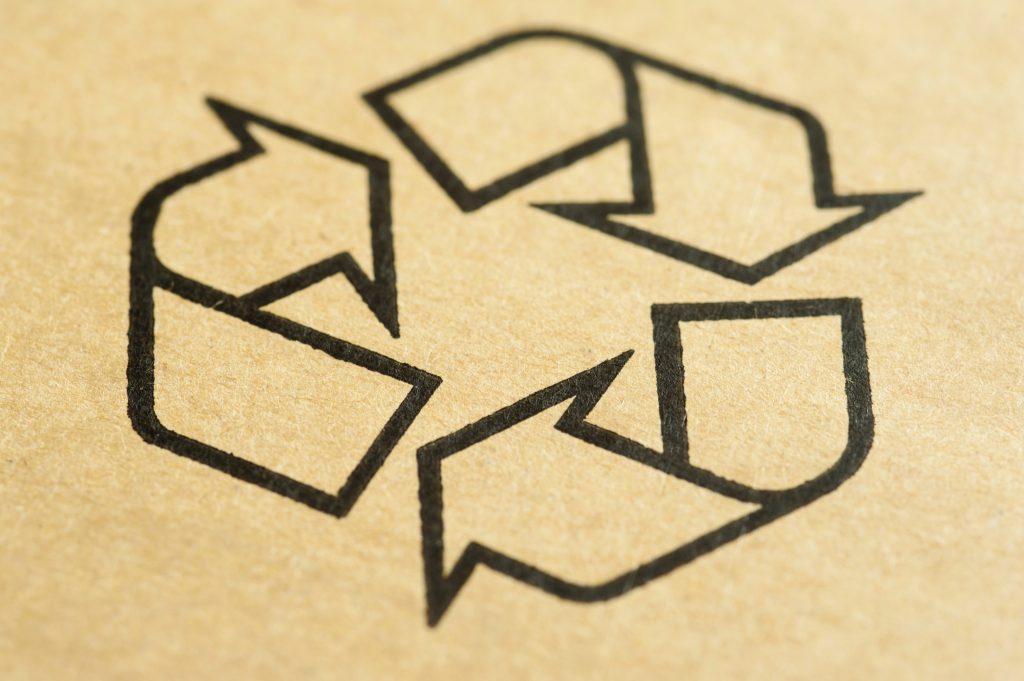
Features
Production
Packaging your cannabis products sustainably
Confused about sustainable packaging? You are not alone. There are many options in the market and, quite frankly, designing for the environment is not straightforward.
April 10, 2019 By Cheryl Sullivan
 Designing your packaging for sustainability needs to consider its lifecycle – the path from raw material extraction all the way through to its end of life. The circular economy promotes keeping materials circulating at their highest value for as long as possible.
Designing your packaging for sustainability needs to consider its lifecycle – the path from raw material extraction all the way through to its end of life. The circular economy promotes keeping materials circulating at their highest value for as long as possible. The materials available for packaging products differ in their composition and structure as well as in their preservation and protection properties. Products require barrier properties to prevent odour, moisture and oxygen transmission, and need materials that offer this protection. Packaging must be functional and prevent physical damage. It is important to know the needs of your product so that packaging can be designed to protect it throughout the entire supply chain, and even when in the hands of the consumer.
These product requirements can present a challenge when designing for sustainability while meeting the product’s preservation and protective requirements.
To understand the life of a package, one must consider the path from raw material extraction through to its end-of-life. A package produced, purchased and distributed in one region may have a very different environmental impact than one in a different area. This is because the collection of post-consumer waste and recycling varies from region to region. There are efforts to harmonize these systems in Canada but at the moment, each province, and even municipalities within provinces, can operate independently. These differences in regional post-consumer waste management capabilities and systems are what’s impeding harmonization.
The circular economy
The circular economy promotes optimization through design by keeping materials circulating at their highest value for as long as possible. Packaging should be developed with this closed loop thinking in mind. We are moving away from the linear approach – where materials were extracted, used and then thrown away – toward a system where packaging is made to be made again.
The packaging waste hierarchy lists priorities in terms of the impact on the environment, from the most to the least favourable:
- Optimize design to keep the materials circulating;
- Reduce to eliminate use or lessen the amount utilized;
- Reuse in a functional capacity;
- Recycle for recirculation;
- Compost for regeneration;
- Upcycle into other products;
- Recover for further processing or into energy through incineration.
Landfill is not an option
The goal is to keep packaging materials from entering the environment or the landfill. This is a challenge when it comes to multilayer, flexible plastic materials, such as pouch bags, because they are not widely recovered. These plastics offer the needed protection and are lightweight, durable and less bulky than alternative materials, and this makes them an ideal choice for many products.
Despite not being recovered, these plastics generally have a lower environmental impact than other substrates such as paper. However, at the moment, recycling the pouches is onerous and expensive because of their light weight and multi-material composition.
The good news is that research is underway to find methods to recover and recycle these plastics. For example, in British Columbia, Recycle BC is running a pilot project to collect these post-consumer flexible plastics at all their depots and explore methods to process the materials.
Design for sustainability
Whether the packaging material is recyclable, compostable or biodegradable is not as important as whether it is identified and disposed of properly within the waste stream system available today.
PAC, Packaging Consortium in Ontario recently published two documents to help companies design their packaging. The PAC NEXT Sustainability Checklist assists structural designers in choosing sustainable packaging. There are six key elements for consideration:
- Source – what are the materials and from where are they sourced?
- Reduce and Optimize – can materials be eliminated or reduced?
- Reuse – are systems in place to reuse the packages?
- Recycle – can the packaging be collected, separated and recovered in existing programs?
- Compost – do the materials meet the requirements for composting and are facilities available for collection and processing?
- Communication – is your disposal messaging clear to consumers?
The white paper, “Ocean Plastics – What the Packaging Industry Can Do,” published by PAC in partnership with Ocean Wise, offers the following guidelines to prevent plastics from entering our oceans:
- Optimize package design – ensure products are protected but not over-packaged;
- Choose materials wisely – biodegradable and compostable plastics are not ocean-friendly;
- Use recycled content and ocean plastic – incorporate recycled content and recovered ocean plastics into your packaging;
- Drive closed loop systems – design packaging that works within current collection systems;
- Communicate proper disposal – avoid misleading claims to ensure the packaging is disposed of responsibly.
Another great resource is the Association of Plastic Recyclers Design Guide for Plastics Recyclability. This guide covers plastics items entering the post-consumer collection and recycling systems most widely used in the market today.
Upon choosing your packaging material, be transparent with your sustainability claims. It is not acceptable to claim that a package is recyclable or compostable if the infrastructure to recover it is not available.
Consumers want accurate information so they can make informed choices about purchasing. They will buy from companies that align with their own philosophies.
Cheryl Sullivan is a packaging consultant, founder of PackYourProduct.com, and chair of PACs Pacific Region Leadership Council.
Print this page